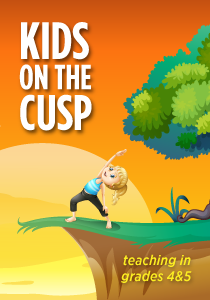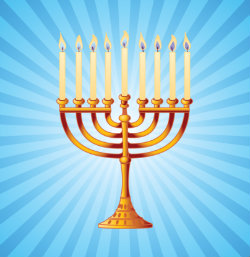Sleigh Bells Ring…Is Anyone Listening?
A MiddleWeb Blog
 The holiday season at school has many facets, ranging from a general sense of excitement, as the holiday break approaches, to an increase in student impulsivity and inability to contain this excitement (see aforementioned “holiday break approaches”).
The holiday season at school has many facets, ranging from a general sense of excitement, as the holiday break approaches, to an increase in student impulsivity and inability to contain this excitement (see aforementioned “holiday break approaches”).
Visions of sugarplums have been pushed out of my head as “to do” lists push their way in, trying to help me recapture my inner Scrooge. These lists are stuffed, like the stockings that will soon be hung by my chimney with care.
 The only time the busyness of the season doesn’t seem to crowd my thoughts is at school, when we are lost in our learning and focused on exploring new ideas, discovering more about the world around us.
The only time the busyness of the season doesn’t seem to crowd my thoughts is at school, when we are lost in our learning and focused on exploring new ideas, discovering more about the world around us.
Thankfully, my 4th grade class is full of children who, despite the upcoming break, are still working hard and staying excited about learning. They’re a wonderful blend of personalities, temperaments, and faiths.
Why we bring the holidays into the classroom
Incorporating holiday traditions is an important way to teach citizenship and character building, as we take a little “time out” to ignore the separation of church and state, synagogue and school, and introduce some traditions and holidays from a variety of religions and faiths across the globe.
We boast a wonderful variety of cultures in our classroom this year, but Hanukkah and Christmas seem to be the two major holidays celebrated in our respective homes, so it was quite an experience last week when our substitute librarian came into our classroom to read to us.

As I sat attempting to focus on grading papers while she gathered the kids on our reading rug, I found myself unable to focus on the task at hand. My ears perked up as she began to read The Christmas Menorahs: How a Town Fought Hate by Janice Cohn. This was a title I’d never heard of, and I couldn’t help being drawn into the story. What I came to learn was that Cohn’s picture book was based on a true story.
A community comes together
It is the story of a hate crime that took place in Billings, Montana in 1993, over three decades ago. After a rock is thrown through the window of the Schnitzer home because of the Hanukkah menorah they’d placed in their front window, a town moves from hatred to love. Families of different faiths support the Schnitzer family’s right to express their own religious beliefs, as they re-dedicate the unity of their neighborhood by choosing to place menorahs in all their windows, regardless of their varying faiths.

I’m glad I didn’t get lost in the grading zone that day – that I was given the opportunity to hear this story.
A link from present to past across content areas
When my ears are in the right frame of mind, when I can hear the bells, I find myself listening for ideas that enhance my teaching. This is a gift that I can give my students all year long. Listening to the Schnitzers’ story was one of those moments of inspiration. The bells in my head were ringing crisp and clear. I quickly jotted down the title and put it, ironically, in my “Christmas” file.
I may have to wait until next year to read and discuss Cohn’s inspiring book with a new class, but these moments of inspiration tend to lead further. They usually lead me to asking myself, “Is there a way to use this now?”
The answer is usually “Yes.”
During Social Studies lessons, we have been discussing the reasons for early exploration. Religious intolerance, and the confusing relationship between church and state, were quite dicey back then. Spreading religion was one of the many reasons for those living in that time to explore the unknown.
History gives us a timeline of faiths and their divergence. Taking a historical look at some religious traditions and beliefs can educate children about more than the difference between a menorah and a Lenten candle.

Just a little tinkling on the keys of my laptop gave me a few possibilities for extending our work in Social Studies as historical thinkers, especially for the two-day week, right before break, when the kids’ excitement will be at its peak…and mine will be headed in the same direction.
Stories from the past, whether they be in a children’s read aloud, a Torah, or a Bible, have something to teach us. In each, there are lessons to be learned and opinions to be formed.
2019 Update: PBS presented a program, Not In Our Town, showing how Billings residents reacted to mistreatment of Native Americans and African American church goers as well as the desecration of the Jewish cemetery prior to the rock throwing. (Source)
One “cool fact” we will learn next week is that the word Hanukkah (or Channukah) translates as “rededication,” or “dedicate again.” Historical writing tells us that the Macabees rededicated their temple to their religion, and the gift of eight days’ worth of oil was received. According to the text, there was only enough oil to last one day.
Dedication is also defined as being a feeling of very strong support for, or loyalty to, a person, a group, or a cause. The people in Billings, Montana, the Schnitzers’ neighborhood community, certainly showed their dedication – a dedication to kindness, loyalty, acceptance, and support of others.
‘Tis the season to rededicate

Some days they are fainter, harder to hear. Some days I have to listen for them earnestly. But most of the time I still hear them. They ring out, loud and clear…in the twinkling of my students’ eyes and the soft chimes of their laughter…
“Yes, Virginia, there is a Santa Claus.”
This post was originally published in 2014.
For more seasonal holiday resources, see MiddleWeb’s Teaching Faith-Based Holidays.






























Great article from a terrific teacher!
Aw, Joey P…Thanks, my friend and fellow writer!
This book has been a favorite of mine for years. I always get a little teary at the end when I read it to my students. So glad you will be sharing it with your classes, too!